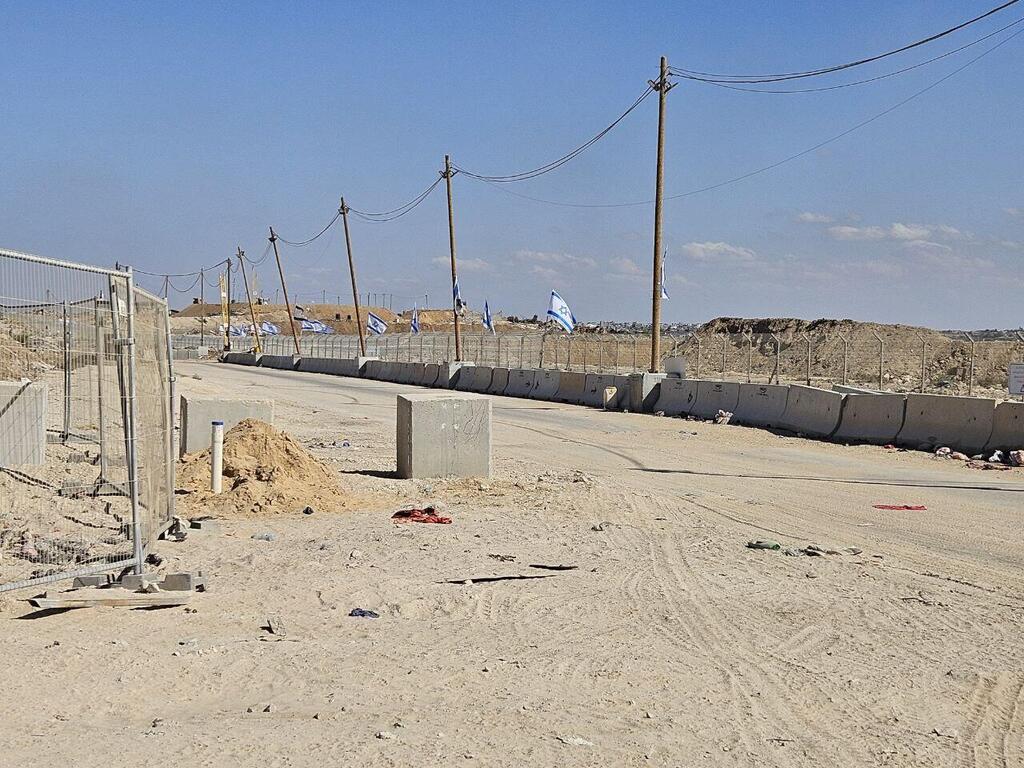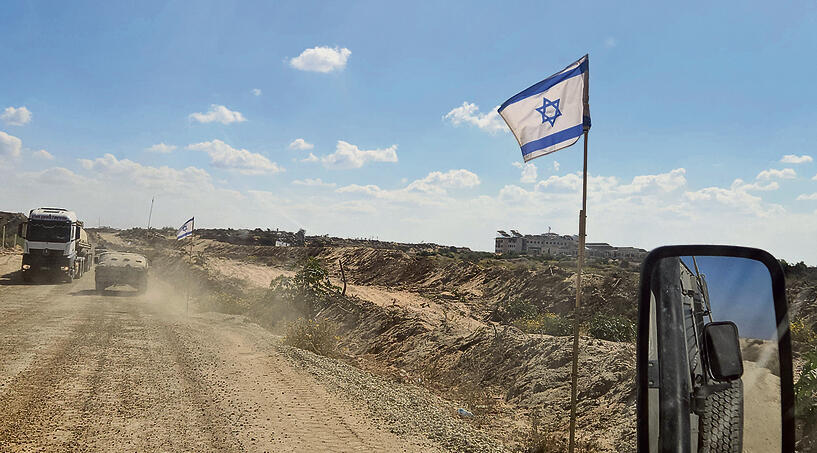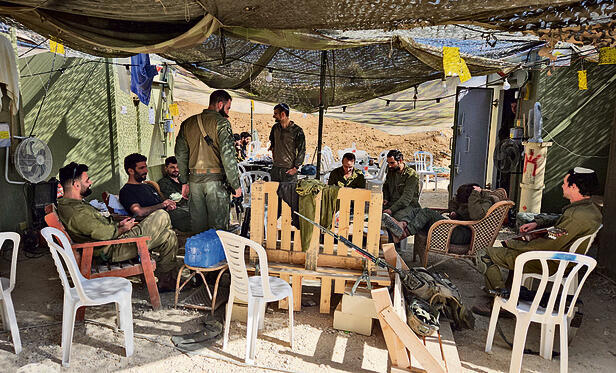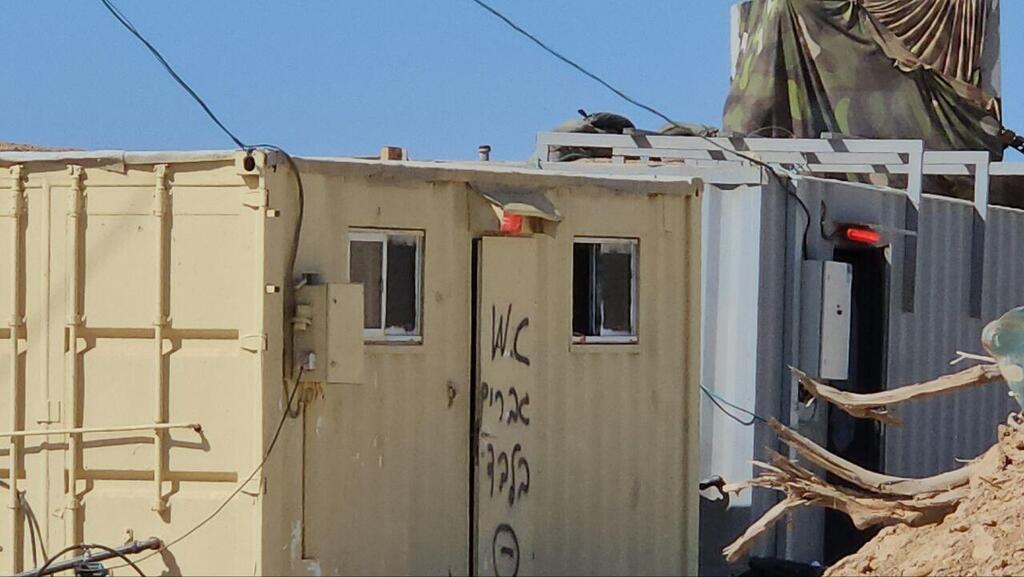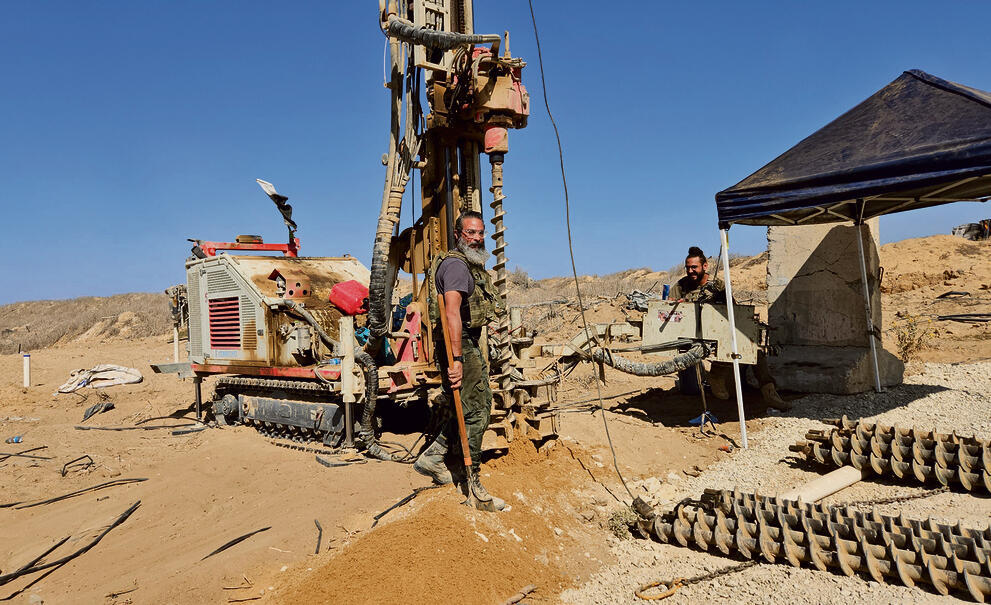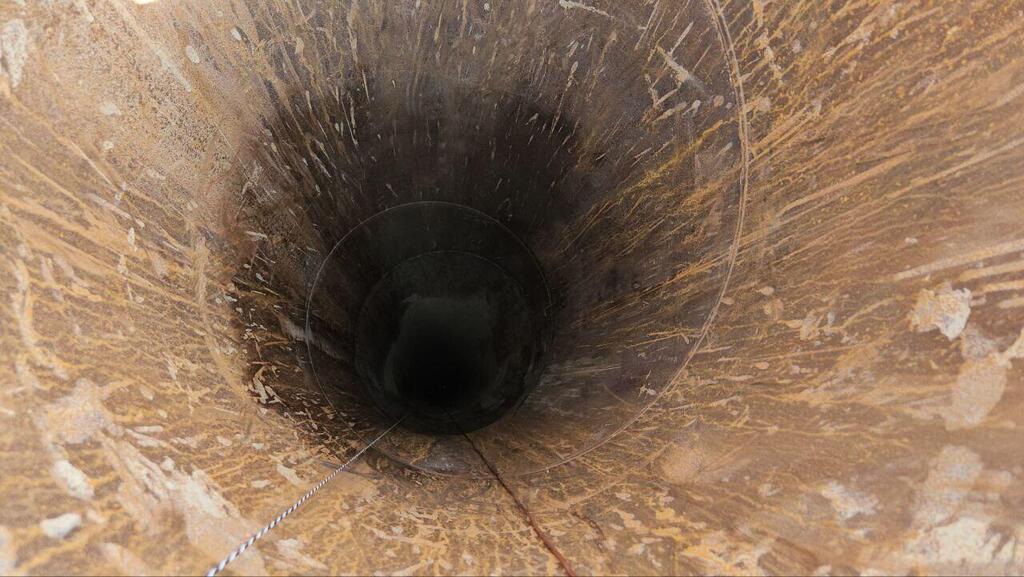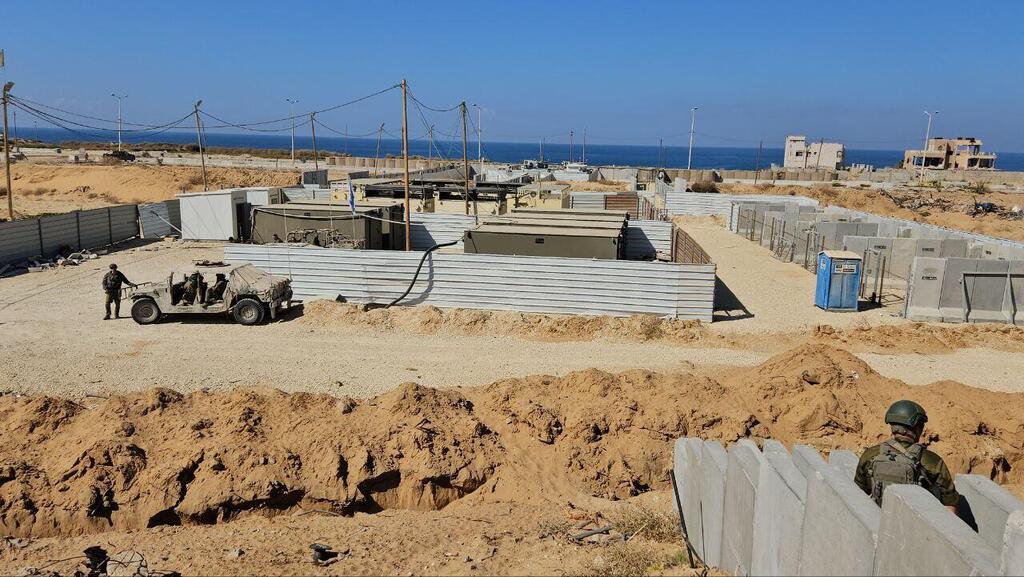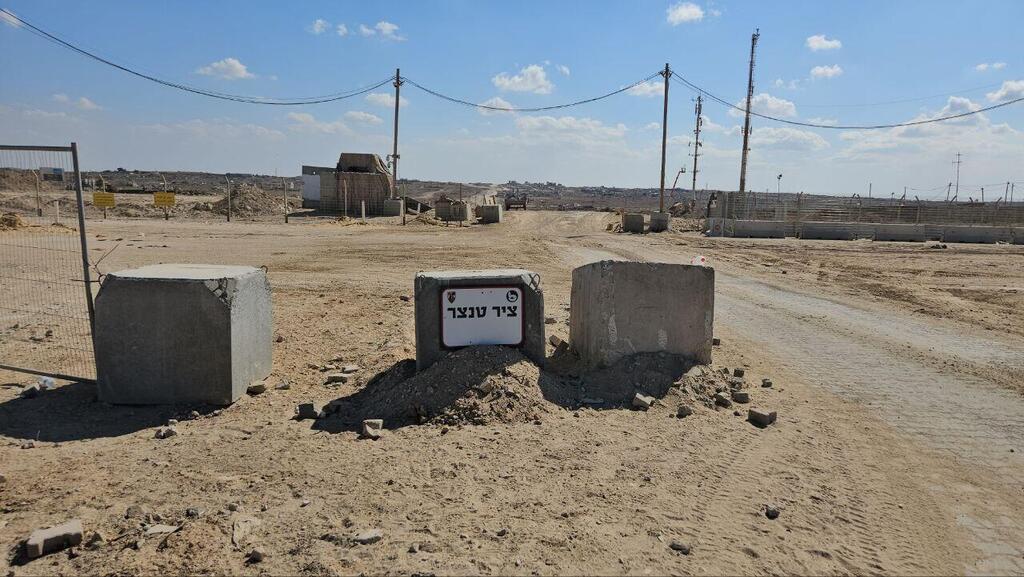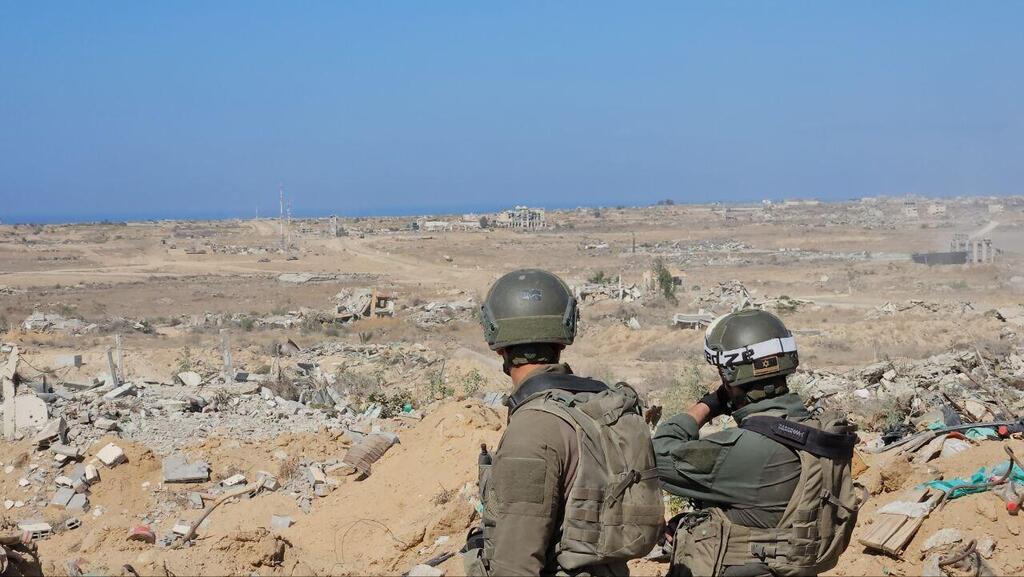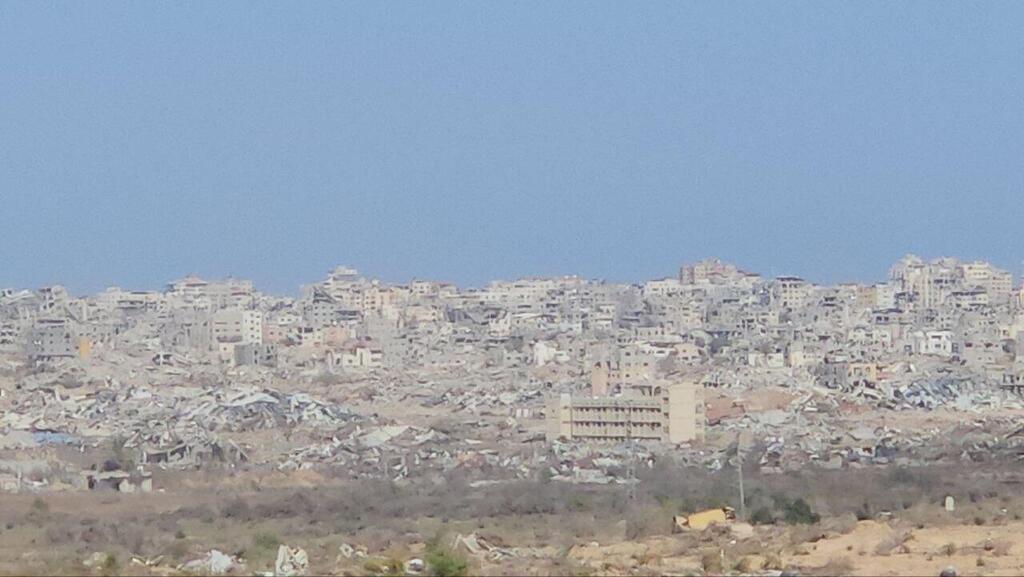Getting your Trinity Audio player ready...
Along the Netzarim Corridor, Israeli flags line a central road extending westward to a large military outpost on the Mediterranean coast, south of Gaza’s Sheikh Ijlin district. The IDF has transformed this outpost into a fully operational base with temporary detention facilities, interrogation rooms and permanent quarters for a brigade command and combat units. Trenches are being dug around the complex to fortify it as construction crews and engineering officers work to complete the fortifications.
The critical part of this base lies between it and the coast: an advanced coastal checkpoint through which, the military hopes, a large portion of the Palestinian population will soon pass southward within Gaza as pressure mounts on the Jabaliya area.
This base is part of Israel's expanding hold in Gaza, marking a significant phase in the ongoing ground campaign. The Netzarim corridor is currently held by two combined IDF reserve brigades, supporting both infantry and armor divisions.
These units differ from the regular defensive brigades stationed along Gaza’s southern border in Israel’s western Negev, where Hamas terrorists launched their deadly October 7 attack. The current brigades resemble those that once maintained Israel’s hold over Gaza before the 2005 disengagement.
Further south, another brigade holds the Philadelphi Corridor between Rafah and the Sinai, a strip Israel captured in May.
Over recent months, the Netzarim corridor has expanded to cover approximately 56 square kilometers (22 square miles), forming an Israeli military enclave at the heart of northern Gaza.
Stretched along an eight-kilometer (five-mile) axis from the Be'eri region to the sea, this corridor is the result of the IDF 36th Division’s ground incursion a year ago to secure the area as a potential leverage point in hostage negotiations.
The proposal, initially positioned as a bargaining tool, suggested Israel would withdraw and allow one million displaced Gazans to return to their homes if Hamas released roughly 100 hostages. However, negotiations have stalled repeatedly, with no resolution in sight.
According to IDF sources, two trends have emerged following Israel’s ground incursion into southern Lebanon, as Gaza becomes a secondary front. First, Israel’s territorial control within Gaza is steadily expanding, with a similar plan reportedly under development for the Philadelphi Corridor. Second, government efforts to resolve the hostage crisis have slowed, leaving the fate of the hostages uncertain.
Intelligence briefings presented to Israel’s Security Cabinet warn that the hostages’ conditions worsen by the week, with Hamas reportedly prepared to execute them if IDF forces advance on their positions. Without renewed negotiations, officials fear the crisis will end in tragedy.
12 View gallery


Former defense minister Yoav Gallant in the Netzarim Corridor, September
(Photo: Defense Ministry)
Right-wing ministers, who oppose prisoner releases in exchange for hostages, view this outcome as inevitable. This scenario, they argue, would naturally resolve the hostage issue and could strengthen Israel’s resolve to retain its current foothold in Gaza.
Israeli leaders and right-wing lawmakers, some openly advocating the establishment of new settlements in Gaza, maintain that retaining control over this newly claimed territory is essential. As public anger would likely focus on Hamas, government officials anticipate that calls for withdrawal would diminish, solidifying Israel's extended presence in Gaza.
The withdrawal order is ready
At the beginning of the war, the border checkpoint here was called "Crossing 96." Once the IDF realized that the Netzarim Corridor would remain under Israeli control, it established “Checkpoint 3” (Point 3), with a small team to monitor the movement of forces in and out of the corridor. Today, it has developed into “Terminal 3,” a large, organized military base at the edge of Be’eri Forest, currently in advanced stages of construction.
Private vehicles can no longer enter Gaza from this area, nor can anyone gain unauthorized entry by posing as reserve soldiers, as was previously possible. Security infrastructure includes checkpoint gates with staffed booths, three inspection points at the entrance corridor, and coordination between the Gaza Division and Netzarim Division (now the 252nd Reserve Division).
Open-sided Humvees, along with armored Defender jeeps (known as "David" vehicles used primarily in security operations in the West Bank), regularly enter and exit, joined by a steady flow of construction trucks, cranes and drills in what looks like a major highway.
The westernmost checkpoint within Terminal 3 is still known as Crossing 96, situated along the border fence and now divided into two parts: one entrance for light vehicles and trucks, and another for armored vehicles such as tanks and APCs several hundred feet away. Crossing 96 is operated by a joint infantry and armor unit.
The first IDF post operates smoothly, aptly named “The Cement Plant” after the IDF cement plant that facilitated the large-scale engineering work establishing the corridor and rebuilding the border barrier damaged at the war’s outset.
Previously, this area was home to a Palestinian grain facility, as these fields—bordering Gaza’s main landfill and close to Israel—were farmed by Palestinians until October 7, interspersed with Hamas positions.
In the post’s yard, surrounded by concrete Jersey barriers and earth embankments, stands a grill frequently used by reservists. Soldiers here enjoy fortified and comfortable sleeping quarters in modular containers, a shaded smoking and relaxation area and proper shower and restroom facilities that have replaced the portable toilets used initially.
Overall, the post has the feel of a small, permanent base that’s pleasant to stay in. The IDF has installed a new water line from Israel, and soldiers’ cell phones remain fully operational. There’s no longer a need to leave devices behind or set them to airplane mode upon entry, as the IDF installed a dedicated cell tower in the corridor, allowing soldiers to stay in touch with family without needing to climb onto rooftops to reach signal.
From the post, the northern end of the corridor is fully visible—completely exposed, with hundreds of buildings that the IDF flattened to expand the area up to the outskirts of Gaza City neighborhoods such as Zeitoun and Sabra.
“The operational tension has eased here a bit, so I treat soldiers returning from missions with various snacks, like these sfinge,” says Dotan Ben-Tovim, a 54-year-old building engineer from Ramat Gan and a seasoned fighter, as he flips the deep-fried doughnuts in sizzling oil.
In line with the relaxed atmosphere, soldiers on base wear partial uniforms, forgoing helmets and body armor typically worn during the early months. They dress casually, wearing sports clothes and only gear up in full protective equipment when heading out on operational activity.
12 View gallery


Dotan Ben-Tovim treating the troops to deep-fried doughnuts in Netzarim Corridor
(Photo: Yoav Zitun)
Driving along the Netzarim Corridor, not a single tank is visible. The IDF’s armored units are dispersed across a security and maintenance zone, which has now expanded to seven or eight kilometers wide. Initially, IDF plans spoke of widening the corridor by just one to two kilometers from the main route. The road itself will soon be repaved with asphalt in preparation for the IDF's second winter in Gaza.
Posts along the corridor are of two primary types: structures built by the IDF, mainly modular containers and military facilities, or repurposed Gazan buildings previously used for other functions but now adapted by the IDF as soldier posts. One such post is a large Palestinian public building that stands out in the area.
"Everything here is modular and removable," say IDF sources. “Most of these structures can be loaded onto trucks and engineering vehicles and quickly dismantled.” The Southern Command has strict orders to disassemble everything and fully withdraw to Israeli territory if necessary.
Between posts along the dual-lane corridor, the IDF is conducting extensive drilling operations to ensure no cross-border tunnels run beneath the route. Led by the 252nd Division’s engineering battalion and involving civilian contractors, this project is designed to prevent potential explosive traps or exit points for attackers from below.
The latest tunnel under the route was discovered in late October, more than 20 meters (65 feet) deep; it has been mapped and will be destroyed. Meanwhile, the search drill campaign is being expanded throughout the corridor’s area.
A few months ago, during the latest clash in the region, a Hamas cell killed an IDF soldier stationed at a corridor post, likely with tunnel support. Hamas terrorists can potentially dig tunnels from Gaza City, located only a few miles away. In response, the IDF is determined to neutralize this threat.
At the start of the year, many Gazans approached IDF posts, primarily from south to north, but were either fired upon or pushed back. Hamas also sent drugged Gazans toward IDF positions to gauge the soldiers' responses. These incidents have since declined, as has the surge of hundreds of Gazans—some armed—toward the corridor posts during the Iranian offensive on October 1, which was forcefully halted and has not been repeated.
IDF forces occasionally receive alerts of potential Hamas raids on the corridor's forward posts, often small-scale guerrilla units. Though mortar and rocket fire on the positions still occurs, it is much less frequent, with entire weeks passing peacefully at some posts. When necessary, loudspeakers connected to detection sensors warn of incoming fire.
Currently, the IDF is permitting and even encouraging the roughly 300,000 Gazans remaining in the northern region to cross south, though Hamas actively prevents this, and many Gazans prefer to remain in the ruins and shelters around Gaza City. Recently, Hamas established a tent compound not far from the port, just a few miles west of the corridor.
The IDF is preparing its large coastal post to screen the tens of thousands it hopes will soon cross southward—a movement the military anticipates will increase with the ground incursion's expansion from Jabaliya into additional areas and neighborhoods within Gaza itself. The coastal base is equipped with interrogation rooms, temporary detention enclosures and inspection stations to minimize direct interaction between soldiers and Gazans.
Erez East, Erez West
The second checkpoint in the Netzarim Corridor lies on Gaza's internal north-south route, referred to by the IDF as "Tenzer" and by Gazans as Salah al-Din. Currently, it is unmanned by soldiers and staffed only when needed to coordinate the transfer of sick or wounded Gazans with Israeli approval across both sides of the Palestinian enclave.
The checkpoint area is surrounded by concrete barriers and fences, Israeli flags and a beginning stretch of small paving stones for easier westward travel. Earlier this year, when I crossed this position with an IDF unit, it was encircled by Gazan structures that soldiers used as temporary posts. Today, these buildings—some three or four stories high—are entirely flattened.
The maintenance and expansion of the Netzarim territory have been enabled through Israel’s efforts to secure international legitimacy, especially from the United States, which occasionally issues rebukes or threats but takes no further action.
Through the Coordination of Government Activities in the Territories (COGAT), the IDF regularly escorts foreign journalists to witness and document the hundreds of aid trucks Israel allows into Gaza carrying food, water, fuel and medical supplies, including to northern Gaza. This aid flows from the newly expanded Erez Crossing, which now includes two terminals: Erez East and Erez West.
This aid ultimately reaches Hamas, which exerts control over the population and regroups militarily despite consistent blows from the IDF. As a result, Israel is facilitating two core conditions: sustaining Hamas as a weakened asset that nonetheless retains control over Gaza’s civilian population, with surviving commanders still active, even in Jabaliya and northern Gaza; and expanding Israeli-held territories in Gaza without advancing a deal for hostages.
Southern Command has not received any instructions to launch U.S.-contracted companies to distribute food directly to Gazans rather than through Hamas, an idea dismissed by commanders leading operations against Hamas as nothing more than a rumor.
“We’ve heard nothing about it, nor have we been instructed to prepare for such a possibility,” one commander said. “For now, we’re broadening humanitarian supply lines, though it’s difficult to prevent Hamas from intercepting the aid, as they frequently seize trucks post-unloading and threaten the lives of Gazan drivers.”
Patterns of combat in the Netzarim Corridor have also solidified over the months: Hamas continuously attempts to harass IDF battalion raids that chip away at Palestinian territory at the corridor’s periphery, with recent operations focused mainly in the Nuseirat area. Hamas, in turn, exploits the static nature of activity in Netzarim by deploying snipers.
“The terrorists here operate guerrilla-style, planting explosives and fleeing in an effort to harm our forces,” described Col. Yonatan Meir, commander of the 179th Brigade, one of the two brigades active in the corridor in recent weeks.
“We’re working around the clock. The corridor hinders Hamas’ ability to regroup and makes it harder for them to recover. My reservist troops have been here for ten months, and we’re doing our best to set them a stable and manageable schedule.”
Expansion efforts are not limited to the Netzarim Corridor. For the first time since the 2005 disengagement, the IDF is reestablishing the Kissufim Crossing to create an additional facility for the transfer of goods (and forces if necessary) to Palestinians in central Gaza.
Moreover, plans are moving forward to replicate the Netzarim Corridor model along the Philadelphi Corridor, which is gradually expanding and taking shape in southern Gaza, reaching toward the historic Gush Katif and the edges of Rafah.
Get the Ynetnews app on your smartphone:



